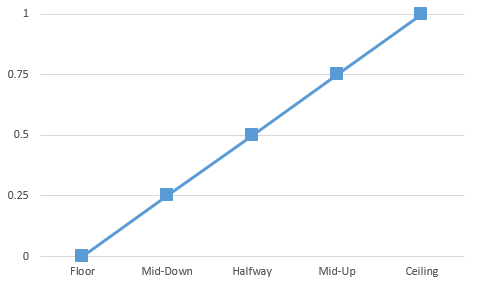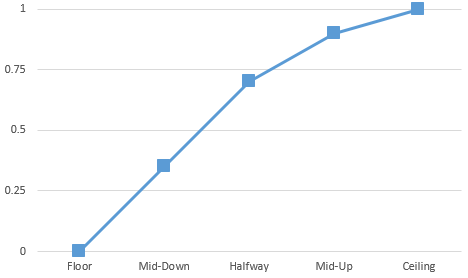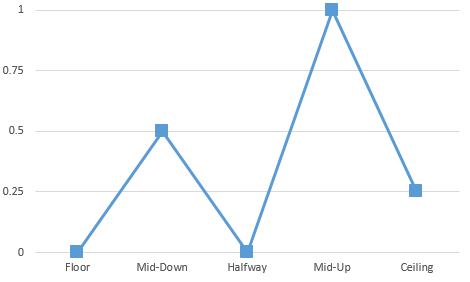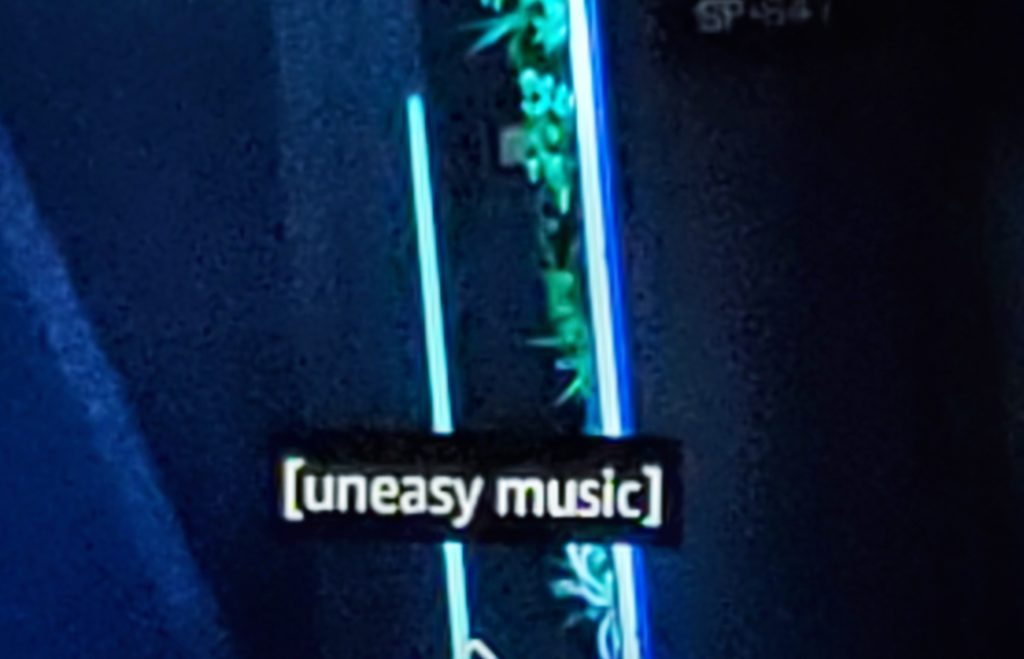I spent much of the weekend with the Hertz Donut mk2 and mk3 side by side. Re-familiarizing myself with the mk2 didn’t take long and I quickly felt more comfortable with it than the mk3. Applying what I’ve learned about FM in the past year, I extended my exploration of the mk2 and compared the two modules in some detail.
I also spent some time with Akemie’s Castle because this is part of my calculations. Direct comparison of that one is more difficult, but my goal is to eliminate overkill and choose what I’m going to be happiest with in the long term. Two Donuts and a Castle is definitely FM overkill, and it’s possible than one Donut and a Castle is too. I’ll say more about that at the end of this post.
Feature set, layout, usability
The HD mk2 has very typical “complex oscillator” architecture: one primary oscillator, one modulation oscillator. The modulation oscillator is just as fully featured as the primary, except it doesn’t feed through the waveshaper. Both can be switched between, sine, triangle and saw outputs and also feature a pulse.square output, and there’s a dedicated XOR output that mashes them together. There’s a single modulation bus which can be assigned to FM, waveshaping, tracking, and/or AM.
HD mk3 is more complex. It has the fully-featured carrier, and two slimmed-down modulation oscillators. The modulators (OpA and OpB) have no sync inputs and there’s one pitch input assigned to OpA, switchable for OpB. There’s one assignable output where you can select OpA, OpB, a mix, or XOR. There’s also a routing matrix where OpA, OpB, and an external input can be assigned to various destinations with different levels — this dictated the interface design to a large degree and necessitated multiple modes and a menu system. This matrix has a single master modulation amount knob and CV.
Mk2 has a waveshaper with three selectable modes. Mk3 has three waveshapers, with modes and menus determining how its single control and CV are assigned.
Mk3 has a small display and a preset saving and morphing system. I don’t personally like it, and wish the module would at least remember your favorite settings on startup outside the context of the preset system. Mk2 also does not remember modes on startup, but the modes are much simpler, accessed by button presses or very simple button combos.
Mk3 also has a Unison mode where it doubles the output with detuned, octave, fifth or fourth-shifted copies. I don’t think I’ve ever used this other than to turn it on, listen, be disappointed and turn it back off; it doesn’t have the depth of the E352/E370’s Cloud mode.
Mk2 on the other hand, has AM as one of its modulation destinations. It’s not very strong compared to using an external VCA, but for more subtle effects or in combination with other modulation destinations, it can be occasionally useful.
Despite the smaller feature set, I find more joy in the simpler setup and feel of the mk2. It just feels more open and inviting to patch. The menus and modal controls in the mk3 feel awkward to me, and the mk3 lacks some of the patch points of the mk2.
Raw sound
The mk2’s raw sine output (with no modulation and no waveshaping depth) has some noticeable aliasing. A lowpass filter at about 4500Hz will clean it up if desired. The waveshaping mode does play some role in the sound even when the depth is at mininum; the orange mode is cleanest. Stability isn’t perfect but isn’t bad. With no CV input and in “VCO” mode, the oscillator ranges from below 20Hz to 3937Hz with a knob turn; max with CV seems to be about 5380Hz (above which, the frequency starts going down as the voltage increases).
Without the waveshaper, the mk2 also offers triangle and sawtooth options from the main output, and a separate pulse output. The triangle seems fairly clean or else is good at masking aliasing, while the saw aliases at higher base frequencies. Again, both are cleaner in the orange waveshaping mode. The pulse output is narrow by default on the primary, though red and green modes act as a width control. It seems to be a square from the modulation output.
The mk3’s raw sine output is clean and free of aliasing. With the octave set to 0 in the menu, the frequency range on the knob is below 20 to only 273Hz; at +2 octaves the range is 69 to 1084Hz. I would certainly have preferred a wider range available on the coarse tuning knob, and an LFO/VCO mode selection rather than octaves. Max frequency seems to go above 20Khz.
I feel like the mk2’s triangle, saw and pulse outs give it an advantage here. I can live with (and even appreciate) some aliasing or filtering as necessary, given the kind of music I make.
Tracking modes
The mk2 has four tracking modes:
- Off: the modulation oscillator frequency is independent of the primary
- Red: I think this was literally called “stupid mode” on the mk1. The modulation oscillator frequency tries to follow the carrier’s base frequency (not its FMd frequency), but it does it via random-ish jumps at an adjustable speed, which eventually home in on it. This is a very distinctive and almost never useful sound.
- Orange: the modulation oscillator is perfectly locked to the primary. This is also rarely useful, as it disables the FM bus; all I can think of to use it for is selecting different output waves.
- Green: the modulation oscillator follows the carrier’s base frequency, with the knob and CV acting as an offset.
In green and orange modes, the tracking CV and knob act as a phase offset. But the CV is unipolar and doesn’t respond well at audio rates. It’s also a destination on the mod bus, where it reacts better — but since the modulation oscillator always modifies its own phase, the result can be weird. It can be used to disrupt the pitch a bit if used alongside FM, or add some interesting noise textures.
The mk3 has three tracking modes for its OpA and OpB, plus a related mode switch, accessed from a menu:
- “Discrete” is the default. This is like the mk2’s green tracking mode, except that the offsets are locked to a specific set of pleasant-sounding harmonic ratios. OpA can be fine-tuned off the ratio a little to introduce some beating.
- “Follow” is exactly like the mk2’s green mode.
- “Free” disables the tracking.
- “A-B Link” determines whether OpA’s V/OCT input is also used by OpB (which has no input of its own).
Two of the modes on the mk2 are almost useless, but it’s easy to switch between them. Discrete mode on the mk3 — despite my initial resistance to its being the default — is often pretty useful. I would give this to the mk3…
…except that I found I can imitate Discrete mode for the mk2 with a simple Monome Teletype scene. It sends predetermined voltages based on the knob position into the modulator’s V/OCT input, so I can still flip easily between neat-sounding ratios with a knob turn. With that in mind, I will call this one a draw.
FM
The basic FM character — at least when the mk2’s waveshaper is in orange mode — is very similar between the two modules. When the modulation bus is fed a linear envelope, the mk3 seems to behave linearly while the mk2 seems to have a logarithmic curve.
When in red or green waveshaping modes, the mk2 has more of a buzzy edge to its FM. And of course the modulator and carrier shape selection (sine/tri/saw) can have major effects on the FM.
The mk3’s second operator effectively makes it a 3-op FM synth. To my ears, when OpA and OpB are both FMing the carrier (parallel FM) or when OpB modulates OpA which modulates the carrier (serial FM) it doesn’t sound as nice as familiar Yamaha FM. However, treating OpA as a second carrier and modulating them both with OpB is extremely effective.
The mk3 has a dedicated external modulation input which can be routed through the modulation system. The mk2 has individual FM inputs for both oscillators. Serial FM on the mk2 isn’t nice, but as with the mk3, using both oscillators as carriers modulated by an external source can work very nicely.
Both the mk2 and mk3 also have exponential FM inputs. On the mk2 this is unipolar 0-5V, which is somewhat ludicrous. But on both, audio rate expo FM is not at all clean and not very usable.
Before this test, nostalgia told me the mk3 is smoother and “too clean” at FM compared to the mk2, perhaps more band-limited. In reality, the mk2’s extra bite comes from the waveshaper modes and the selectable oscillator shapes. I honestly feel like this is a bigger advantage than having a third operator for FM, since I can easily use an external oscillator for that. To me, the mk2 wins this round.
Waveshaper(s)
The mk2 has a single waveshaper (labeled “waveform discontinuity”) with three modes:
- Orange: the cleanest of the three when the depth is at minimum, but immediately the noisiest as the depth is increased even a little bit. It introduces a complex fractal shape, beginning with higher harmonics and then filling in downward toward the fundamental, which remains strong throughout the range. Internal modulation of the amount at audio rates can introduce beating and subharmonics, but the noisy, sizzling character remains.
- Red: this mode adds a little bit of buzz even at minimum, especially with FM. As the depth increases, it resembles mathematically precise digital wavefolding, with a sine folding over into “cat ears” with sharp edges. Not as smooth as a classic analog wavefolder, but definitely usable, especially with an LPG.
- Green: this mode also adds some buzz at the minimum setting. As the level increases, the waveform begins to clip at the top and bottom, and then begins folding somewhat smoothly. It can give FM an edge without as much harshness as red mode. When modulated internally, it can sound quite pleasant and combines very well with FM on the mod bus.
The mk3 instead has three waveshapers which can operate simultaneously:
- PDist: phase distortion, with varying effects on harmonics. As the level increases, it first shapes the sine into a saw-like shape, and then at about the halfway point it yields a smooth double sine/triangle with a strong 2nd harmonic. Above that, it brings in richer high harmonics. The overall impression I get is less of a Casio CZ phase distortion synth and more of a wavetable. Sweeping PDist itself isn’t that nice, but it does combine smoothly and predictably with FM, and modulating the level at audio rate gives results that are buzzy without being excessively harsh.
- Umbrage: a fractal waveshaper, with a different harmonic profile than mk2’s orange mode. It’s strong in the second harmonic at first and then shifts toward the third, but also rich in upper harmonics. A more aggressive sound than PDist. Audio rate modulation of Umbrage can actually sound smoother than keeping the level static, and can introduce chord-like tones. It also complements FM well, though the tone is particularly buzzy and seems to be asking for an LPG to tame it.
- Reso adds harmonics progressively, while adding a resonant peak to them. It sounds very much like a resonant lowpass filter, even though it’s being applied to a sine oscillator. This one can’t be the target of internal modulation. I don’t feel it complements FM very well, but it does combine decently with the other waveshapers.
On both models, external audio-rate modulation of the waveshaper is generally very rough. Envelopes and LFOs make better input there.
Before this comparison I would have given this to the mk3, but now I find the decision more difficult. While I think the mk2 sounds better with an analog wavefolder or sine shaper, there are some uses for its modes, particularly the green. On the mk3, I find PDist disappointing, and Reso a bit gimmicky for my tastes since I don’t really use that kind of filter sweep. Both modules have a lot of high frequency “LPG fodder” options.
I think on both modules, the waveshapers compliment the rest of their design and are strongest when used to complement the FM and be modulated at audio rates. I’m going to call this one a draw.
Overall
I won’t pretend that these categories have equal weighting, or that a slight advantage should count the same as a big advantage. But it’s pretty clear that, while my ears do appreciate some of the mk3’s unique abilities, my heart is with the mk2.
Akemie’s Castle?
Using old Yamaha OPL3 chips rather than code running on a microcontroller, it’s a different beast. Four operators with selectable algorithms, and two separate voices with independent pitch controls that work off the common operators. One of the voices has a chord voicing knob. All the operators have selectable waveforms rather than just sines. There are all kinds of quirks with this one — most notably, “leaky” internal VCAs so that some modulation always sneaks through even if the depth is supposed to be zero, and a steppy, glitchy response to changes in modulation depth.
These days I prefer 2op FM over 4 or more, but the algorithms with multiple carriers, or which divide the assignments between the A and B oscillators are useful. Ridiculously thick clusters of chords can be had when combining B’s chord mode with differently-tuned carriers and some of the more chord-like waveshapes, as well as the independent tuning on A. This makes it excellent for drones, and I recorded a piece this weekend which takes full advantage of that. It also does much more old-school sounding FM plucks and, well, cuteness, than the Hertz Donut or other Eurorack oscillators can achieve — a sound I like on its own, but which won’t necessarily always fit in with my musical style.
On the downside: it’s big, and it drinks deeply of -12V current. (And I also think its current position at the top of the case isn’t ideal for experimentation; if I keep it, it deserves to move a little closer.)
One of my options is to keep the HD mk2 and Castle. I will probably worry about the focus vs. overkill issue though. This is a lot of FM, particularly given that other modules, the Reface CS, and software all can also do FM (albeit each in their own way).
Another option is to let go of Castle and keep just the mk2. If I want those big chords I could achieve them with Bitwig Poly Grid or Plogue’s retro FM plugins, or I could layer them in other ways if so inclined. I don’t feel like the plugins are as satisfyingly hands-on or authentically glitchy as I might like, so this does put those sounds at some remove. It does open up some space that could go to a Xaoc Odessa perhaps, or just stay empty.
A third choice would be to let go of both Donuts and keep the Castle. This feels a bit radical and scary, because missing a “real” complex oscillator was the impetus for the big shakeup where I sold the ER-301 — but in many ways the Castle can perhaps step into that space. It has some appeal in terms of consolidation and focus. The features (and cleanness) that Castle lacks are still available through Rings’ FM mode and my two waveshaping modules, plus Bitwig.
I think my next move is to work extensively both with and against Castle. Can I duplicate those big chords with Bitwig in a satisfying way? Can I get close to that retro kawaii sound that way? And, can I get satisfying “complex oscillator”-like results with the Castle and without Donut?
Also: would rearranging my case help? Something’s got to be on the top row, but perhaps I need a rethink here.












